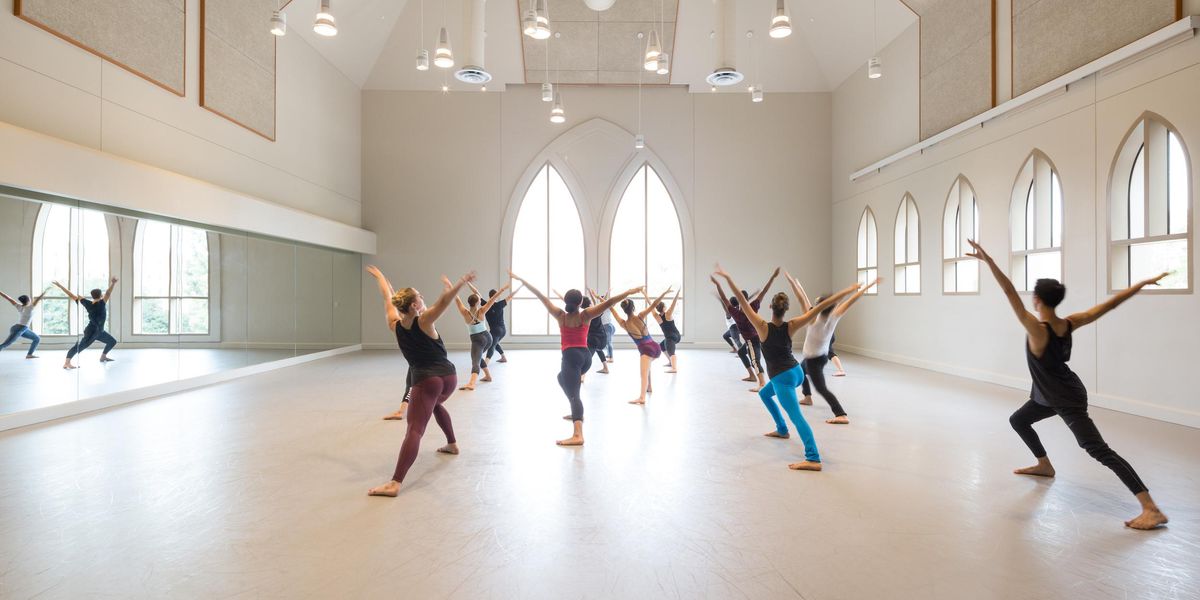Cedar Lake Contemporary Ballet
The Joyce Theater, NYC
May 15–27, 2012
Performance reviewed: May 15
Each time I see Cedar Lake Contemporary Ballet, I marvel at the earnest physical investment of its dancers: They attack each work as if they all matter equally, even ones that might not otherwise move me. I imagine choreographers would fight for the chance to have their visions interpreted by a repertory ensemble with this much commitment and intensity, not to mention technical capacity. I recently caught up with the troupe for Program A of its Joyce Theater season.
Hofesh Shechter’s Violet Kid, which includes 14 dancers, almost the entire company, opens with an aggressive, grinding sound that is quickly silenced. A man’s heavily-accented voice—perhaps the choreographer, an Israeli—asks, “Do I talk too much?” This seems innocent enough, and apropos of nothing, until it is repeated while one man kneels and another presses two fingers against the kneeler’s head like a cocked pistol. The voiceover speaker elaborates: “If I didn’t talk too much, I would have more friends.” Suddenly, we’re not sure where we are except that it is someplace we’d rather not be.
Matthew Rich (foreground) in Hofesh Shechter’s
Violet Kid
Musicians Ramon de Bruyn (double bass), Mairi Dorman-Phaneuf (cello), and Tawnya Popoff (viola) appear and disappear from a surface suspended above the stage. Fog obscures whatever holds them as if they are afloat on a cloud. The score—which also includes recorded percussion by Nathan Davis and Matthew Gold—gathers, groans, pounds, and chugs along, ominous and anxious.
Shechter’s ensemble boils and spews, a gush of lava, or an ocean roiling and alive with agitated creatures. Each performer dances with more-than-human elasticity, stretching and snapping in ways that no human should move. Dancers melt into and emerge from dark spaces, at times becoming one organism, at other times splitting into distinct beings who handle one another roughly for no reason other than that’s their nature. Cedar Lake dances the hell out of this bleak, terrifying work where hell, as we’ve heard, really is other people.
Crystal Pite’s Grace Engine—premiered by Cedar Lake this year in Lyon, France—opens with an extreme, breakout solo for Jon Bond, always a company notable, now with several years under his belt and, like his colleague Nickemil Concepcion, a maturing, deepening self-presentation. But Pite, like Shechter, capitalizes on the troupe’s collective rigor. Moreover, she brings out, in the men, an athletic hyper-masculinity, another capability often seized upon by Cedar Lake’s commissioned dancemakers. It makes for a wow of a stage picture, although enough of it can make me long for different textures.
Cyrstal Pite’s
Grace Engine
Set between these two works was Angelin Preljocaj’s 1995 Annociation, performed, the night I saw it, by Acacia Schachte (as the angel) and Harumi Terayama (as perhaps too girlish a virgin). Schachte handled the disruptive, alien physicality of her role very well, though neither dancer inhabited her dancing with galvanizing force.
With the inclusion of this duet and the necessity of two intermissions, Program A ran very long. It’s curious how a venue can determine what is considered to be the appropriate length of a show. An hour is good enough for a production running at any of the usual “downtown, contemporary dance” spots where, admittedly, I spend the bulk of my dance-going time. If it’s mounted at houses like the Joyce or City Center or at Lincoln Center, apparently nothing under 90 minutes will do. Any of the three works here could have been shown elsewhere all by itself, perhaps leading to interesting explorations of the work by the performers and greater engagement for their audiences.
Cedar Lake continues at The Joyce Theater with Program B, May 22–27. See
www.joyce.org.
Pictured at top: Ana-Maria Lacaciu & Joaquim de Santana in Crystal Pite’s
Grace Engine
All photos by Julieta Cervantes, courtesy Cedar Lake
.




